MARIANI’S
Virtual
Gourmet
JUNE 14, 2015
NEWSLETTER
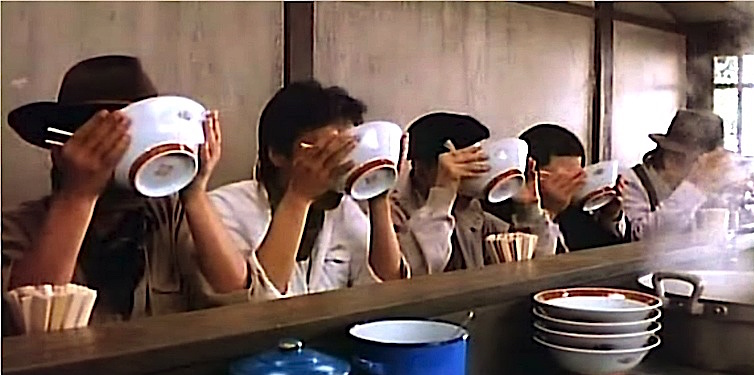
"Tampopo"
(1985)
IN THIS ISSUE
SUMMER READING
By John Mariani
Mireille Guiliano's Passion for Oysters
By Mort Hochstein
FATHER'S DAY GIFT SUGGESTIONS
By John Mariani
NEW YORK CORNER
Texas de Brazil
By Mort Hochstein
Master Chef Roger Vergé Passes Away
By John Mariani
NOTES FROM THE WINE CELLAR
Bobby Cox Takes Sole Ownership of Pheasant Ridge
by Andrew Chalk
❖❖❖
SUMMER READING
By John Mariani
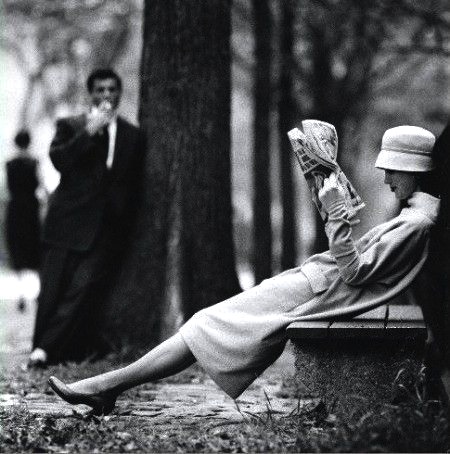
The seasonal tsunami of new books on food and wine, grilling and baking, dieting and gluten-free, are increasingly just more of the same. Another Greek cookbook? Two more Thai street food books? Tedious reveries of living, loving and cooking in either of the two Portlands? Given that most of these end up selling fewer copies than a new translation of Sartre's Nausea, one wonders why the publishers bother to keep ripping off their authors via their in-house Departments of Sales Prevention.
So, unless, you are dying to try out another 120 recipes for Lebanese pastries or read about 1,001 dishes you'll never get around to eating, the only sensible thing to do for summer is to search out food and wine books worth the actual reading, books that inform, entertain, educate and enlighten. Here is my pick for those kinds of books most likely to claim a place on my bookshelves past Labor Day.
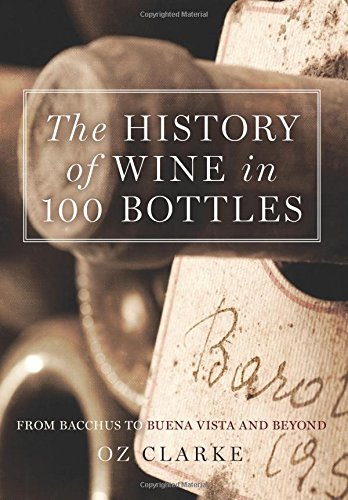
THE HISTORY OF WINE IN 100 BOTTLES by Oz Clarke ($24.95)--A wonderful read and antidote to all those windy 700-page volumes of out-of-date tasting notes and winery histories. Clarke, who is one of the wine world's savviest and most readable authors, gives us the reasons why wines as illustrious as Mouton-Rothschild and as commercial as Mateus are milestones in wine history and for the industry itself. Along the way there are stories of Egyptian tombs full of wine jars, the reason for Greek resinous wines, how the modern wine bottle came to be (in the 1740s), the importance of Louis Pasteur, and opinions on international wine consultants like Michel Rolland.
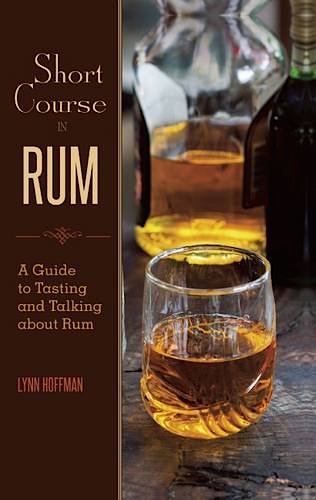
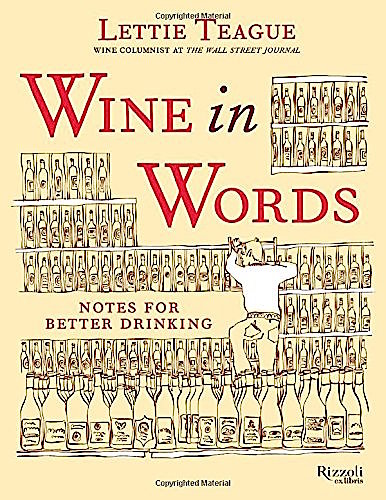
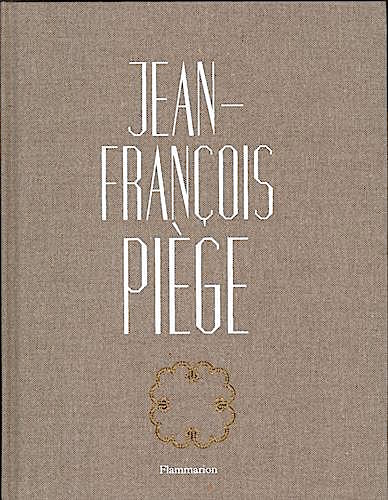
JEAN-FRANÇOIS PIÈGE by Jean-François Piège ($85)-- The cliché that you can’t tell a book by its cover has never been more true than in the case of this all-gray volume, whose cover hides within some of the most stunning French cuisine of a contemporary Michelin-starred master. Piège, 45, brought back the luster of Paris’s Hotel de Crillon Les Ambassadeurs and made a further mark at his own eponymous restaurant on Rue St. Dominique. These are not dishes the home cook is likely to attempt, but the book is a template for modern French cuisine, which gives the lie to those who contend the gastro-scene in France has become sterile and stultified. The photos of the dishes show the complexity of Piege’s cuisine, so it’s too bad the recipe pages themselves are printed in black ink on battleship gray paper.
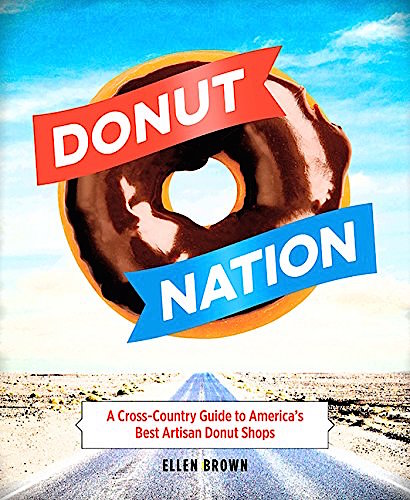
DONUT NATION by Ellen Brown ($22)-- I always await with an appetite the next volume from the prolific Ellen Brown, whose topics often seem narrow but whose scope is daunting, even when it comes to an item like the donut. For this is not just a book of recipes--and they are all tempting, with names like “Dutch Monkey,” “Chocolate Stout” and “Zeppole”--it is also a Baedeker to the myriad donut shops all over America, each thoroughly researched and lovingly described. Brown, who was USA Today’s first food editor and now is a weekly columnist for the Providence Journal, has enormous affection for American fare and she writes about it with gusto, as when she describes the nurse-like uniforms of Psycho Donuts in San Jose, CA, where the donuts types are scribbled on prescription pads.
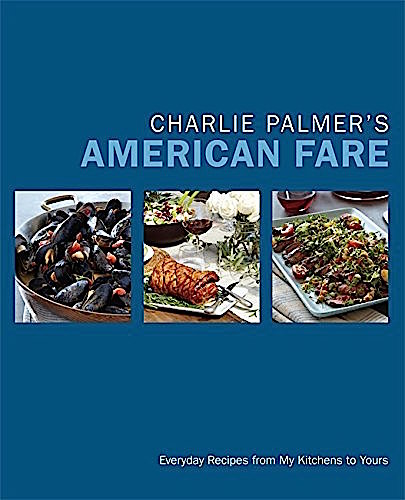
CHARLIE PALMER'S AMERICAN FARE by Charlie Palmer ($40)-- The marriage of French technique and American good taste has affected both cuisines so that the distinctions are not as evident as they were before chefs like Charlie Palmer, who graduated from the Culinary Institute of America to go the classic route of apprenticing in illustrious restaurants in France, came on the scene. Today he runs 14 restaurants and hotels, and his long residency in the wine country of Sonoma has been a crucible for developing family meals based on everything he knows, from baked ratatouille and green tea soba noodles with tuna to pork loin with orange and mustard-crusted rack of lamb. Recipes are simply and clearly written and geared to the home kitchen--perfect for outdoor cooking this summer.
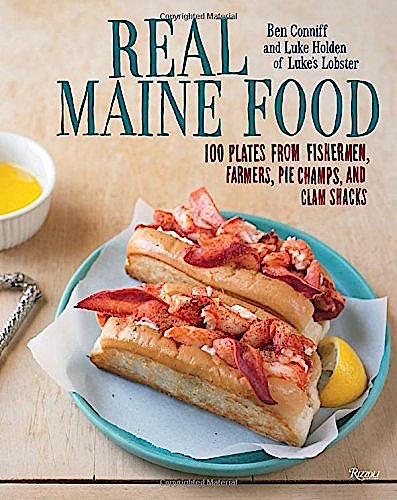
REAL MAINE FOOD by Ben Coniff and Luke Holden ($35)-- I don’t know that there is a “fake” Maine food, but Coniff and Holden will convince you that the 100 recipes culled from “fishermen, farmers, pie champs, and clam shacks” have a distinct regional flavor based on the glory of Down East bounty, both from the sea and the land. There are communal dishes like the “Washtub Lobster Bake” and recipes using kelp in a salad; there’s a finnan haddie gratin and pastrami mackerel with whole grain mustard; and there is “Bean Hole Beans” along with anadama bread, maple kettle corn, and Whoopie Pies. The evocative photos are first-rate, too.
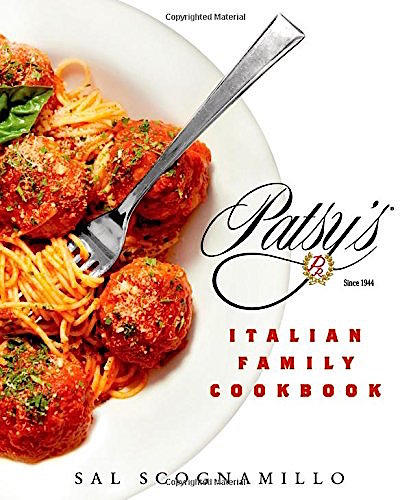
PATSY'S ITALIAN FAMILY COOKBOOK by Sal Scognamillo ($29.99)-- Patsy’s is far from the last remaining Italian-American restaurant in New York, but it is to my mind the best, not just for the quality of the cooking and for the wall of celebrity photos it is famous for, but for the hospitality of the Scognamillo family that has run this ebullient Theater District restaurant for seven decades. Patsy’s seems never to change, but in fact Chef Sal is constantly working to improve dishes with better, seasonal ingredients, without ever compromising what made them so beloved in the first place, from mussels marinara and eggplant rollatini to osso buco and spaghetti and veal meatballs. Open any page, look at the photo of the food, and just try to stop yourself from salivating.
Mireille
Guiliano: Paris Oyster, A Love
Affair With The Perfect Food
By Mort Hochstein
 By
the high water mark she set more than a quarter of a
century ago, Mireille Guiliano’s fête for her latest
book , Paris Oyster, A Love Affair With The
Perfect Food ($20), is quite modest.
By
the high water mark she set more than a quarter of a
century ago, Mireille Guiliano’s fête for her latest
book , Paris Oyster, A Love Affair With The
Perfect Food ($20), is quite modest.
Back in the eighties, this powerhouse of a
woman was the North American CEO for Veuve Cliquot
Champagne. She staged a lavish party, a screening of
the award-winning film, “Babette’s Feast,” followed
by a monumental buffet recreating the memorable
banquet that gave the movie its title.
I thought of that event while
attending a reading Mireille staged at the French
Institute Alliance Française in New York recently.
There was no extravagant buffet ,sad to say, just
four select oysters, a fine Sancerre, Mireille
rhapsodizing over the French passion for oysters,
and a respectful audience that paid to hear her
promote a book.
In the years between these two
events, Mireille (below)
left Veuve Cliquot and went from behind-the-scenes
marketing guru to literary light, front and center.
She became the 21s century’s version of Alexis de
Toqueville, who explained American culture to the
French with his two-volume book Democracy in
America, in the mid 1800’s. Mireille
has been explaining the French 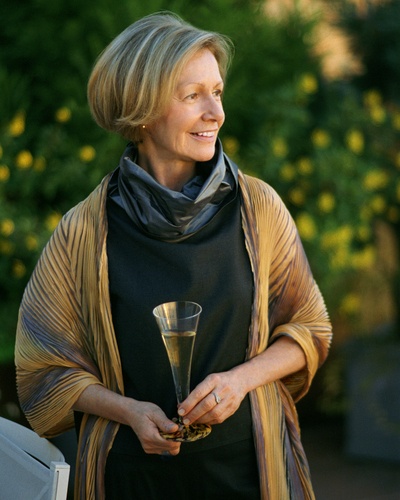 way of life to Americans
and the world in a series of books, starting with
the best selling French Women
Don’t Get Fat in 2005. She followed that with
French Women
for All Seasons; Women, Work and the Art of Savoir
Faire; a cookbook and website based on French Women
Don’t Get Fat, and innumerable articles and
speaking engagements.
way of life to Americans
and the world in a series of books, starting with
the best selling French Women
Don’t Get Fat in 2005. She followed that with
French Women
for All Seasons; Women, Work and the Art of Savoir
Faire; a cookbook and website based on French Women
Don’t Get Fat, and innumerable articles and
speaking engagements.
Guiliano has planted her flag in
a vein of what seems to be an inexhaustible gold
mine. Asked what makes French and American
cultures so different, she cites feminism. “Before the
rise of equal rights for women in the United States,
they were at home and were cooking. Then things
changed drastically, and when they went to work,
they put the cooking aside. In France, women do not
regard a job as the top priority in life, whereas in
the United States, you are sort of defined by what
you do, and that is why so many women are lost when
their careers end.”
Returning to the subject of her
new book, Guiliano
said that the French passion for oysters can be
explained by three virtues: The oyster, she
rhapsodizes, is simply delicious, but,
secondly, it is
a nutritional powerhouse, loaded with
proteins, carbohydrates, antioxidants, good lipids,
and wonderful boosts for the human immune system.
And the third element is sex. Casanova, she tells
us, seduced a total of 122 women, on a diet of five dozen
oysters a day. The Roman emperors, she notes, paid a
fortune for oysters, having them shipped by sea from
Cancale, France, and no one questioned their belief
in the aphrodisiac 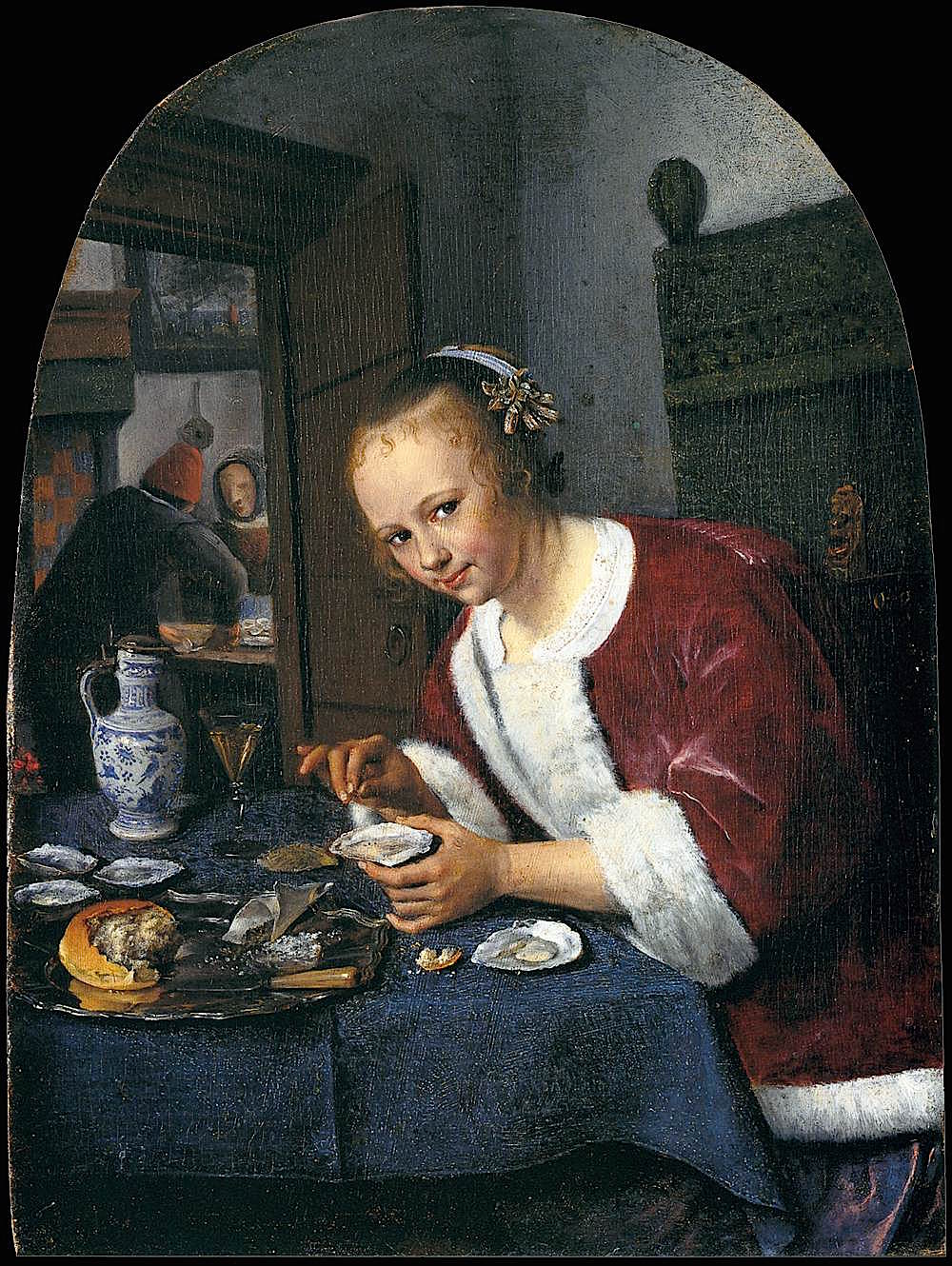 qualities of
the crustacean delights.
qualities of
the crustacean delights.
While
she says there is no scientific proof that oysters
inspire and facilitate sexual performance, she
reports that they are rich in acids associated with
increased levels of sex hormones, as well as zinc,
which aids in the production of testosterone.
She gives example after example of Parisians
savoring the oysters piled high on street carts and
in bôite after bôite in Paris. She
mentions many of her favorite restaurants for
oysters, like
La
Coupole, Brasserie Lipp, Le Dôme, and Le Procope,
but her oyster heaven is Huîtrerie Régis, a popular
hole-in-the- wall -sized temple to the oyster in the
heart of Saint Germain-des-Prés.
Régis, the proprietor (no last name to
speak of) does not take reservations, but he is good
to his regulars, so Mireille seems always able to
find a seat at his table. A successful businessman
in other fields before succumbing to his passion for
oysters, Régis is, he says, addicted to them, and
joyfully works at his trade nearly 18 hours a day,
six days a week, all the while exuding bonhomie to
his fellow oyster lovers.
Guiliano’s book is crammed with
descriptions of belons, facts and figures on speciale de
claire, fin de claire, prairies and Marennes,
the varying grades of oysters and advice on how best
to eat them. But the most interesting parts are the
recounting of the shared passion
of Mireille and a battery of famous Parisians
who make Huîtrerie Régis their
club. (I have to interject here that I, too, am
an oyster lover. During a recent one week visit
to Paris, I ate four nights at La Mascotte, an
oyster haunt in Montmartre, and will return as soon
as possible.)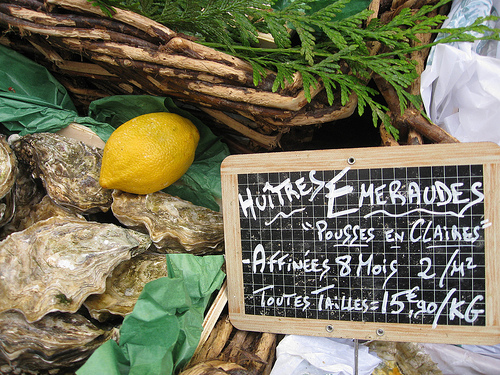
Back in the
seventies, the gourmet food writer Roy Andries de
Groot wrote his most heartfelt book, The Auberge of
the Flowering Hearth, about a restaurant deep
in the the Jura Mountains. Food fanatics swarmed the
little inn, driving one of the two patrons into
early retirement and the other into surrender. She
sold her inn and the place no longer rates any
attention. I asked Mireille if the book’s
glorification of Huîterie Régis might incite a
similar onslaught. Non, she
emphasized: “My little book may bring a few
customers, but with such a small place, so many
oyster bars in Paris, and a no reservation policy,
the hurried crowd of today may not consider it
necessary. There is room for those who come early
and are in no hurry. Régis is also a passionate
baker and makes the delicious apple tart of his
grandmother daily, hopefully for the next ten years.
No use worrying about the future.”
Paris
Oyster ends with Mireille's version of
“We’ll always have Paris,” Humphrey Bogart’s famous
farewell to Ingrid Bergman in the movie
“Casablanca.” “Huiterie Régis,” she declaims, “is
Paris, past, present and future. When I am in New
York or in a far-off location, I know I can mentally
slip into a seat at Régis and feel deeply,
emotionally there. The culture, the people, the
traditions, the oysters. I can eat them as Hemingway
and Proust did. I think I’ll take a dozen.”
❖❖❖
FATHER'S DAY GIFT SUGGESTIONS
By John Mariani
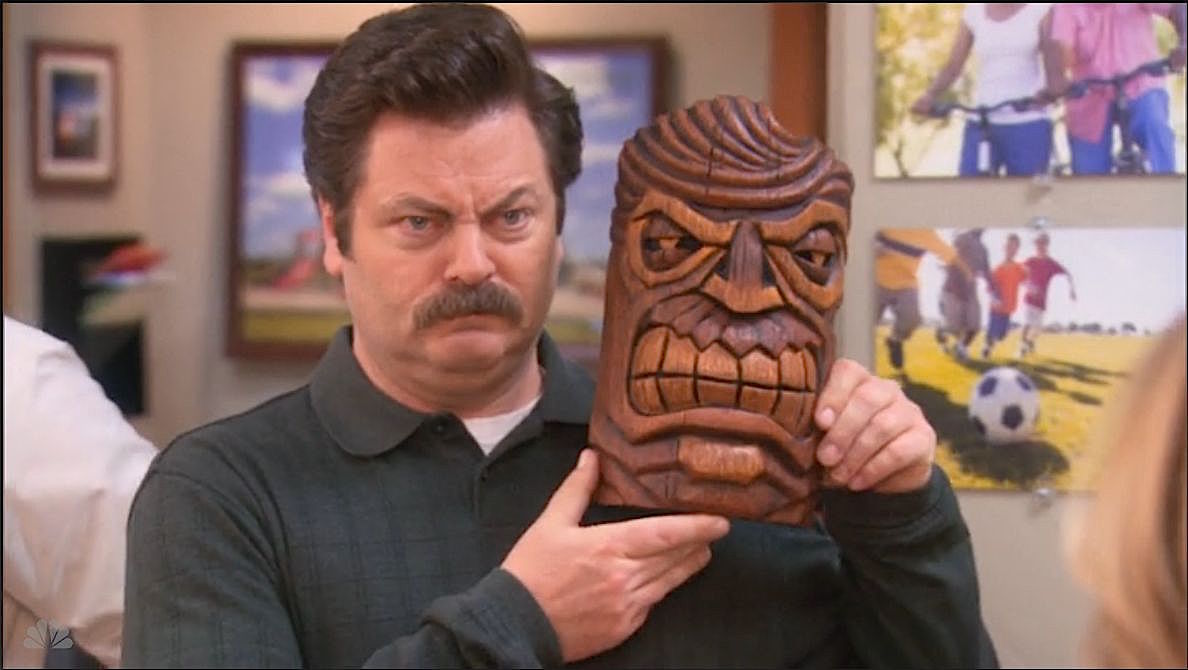
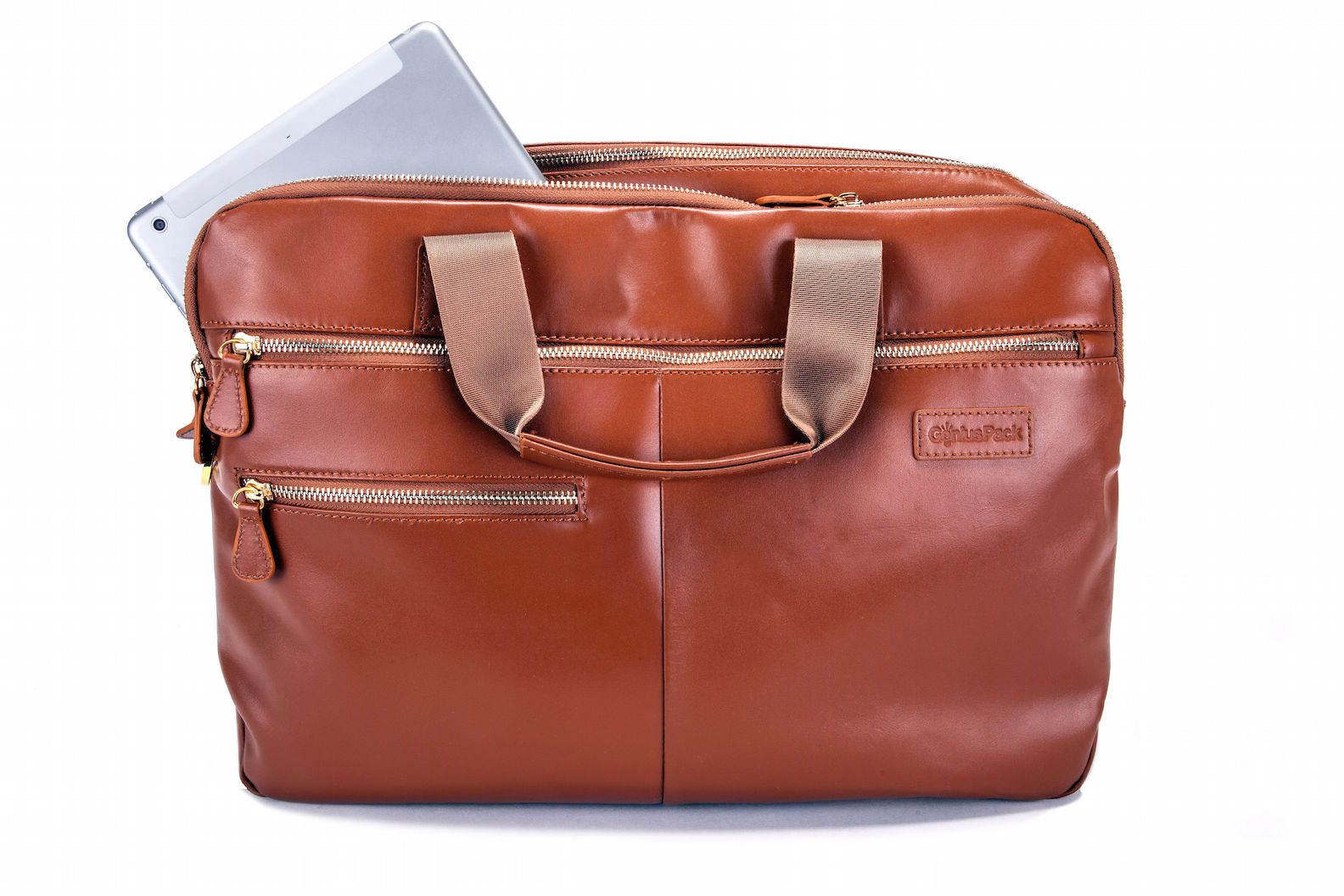 LUXE LEATHER
ENTREPRENEUR BY GENIUS PACK ($278)—Men
can never have enough pockets, especially when it
comes to briefcases, and I found that this Luxe
Leather Entrepreneur had so many pockets that I
had to go over the case again and again before I
found and got used to them all. A padded
compartment fits 13-inch
to 17-inch laptops; there’s a water-resistant
umbrella pocket; pockets
for newspaper, pens, business cards, and a
Genius Charger & Device to power up your
iPhone (though the iPhone 5 and 6 requires use
of their battery cord). The zippers are hefty,
the teeth have real grip, and the carrying
handles (with strap) easily fit over trolley
handles and stay put. Of real importance, it
only weighs 1.2 pounds. The case is not the most
beautiful piece of luggage, but it does
everything you need a case for. http://www.geniuspack.com/collections/luxury/products/luxe-leather-entrepreneur
LUXE LEATHER
ENTREPRENEUR BY GENIUS PACK ($278)—Men
can never have enough pockets, especially when it
comes to briefcases, and I found that this Luxe
Leather Entrepreneur had so many pockets that I
had to go over the case again and again before I
found and got used to them all. A padded
compartment fits 13-inch
to 17-inch laptops; there’s a water-resistant
umbrella pocket; pockets
for newspaper, pens, business cards, and a
Genius Charger & Device to power up your
iPhone (though the iPhone 5 and 6 requires use
of their battery cord). The zippers are hefty,
the teeth have real grip, and the carrying
handles (with strap) easily fit over trolley
handles and stay put. Of real importance, it
only weighs 1.2 pounds. The case is not the most
beautiful piece of luggage, but it does
everything you need a case for. http://www.geniuspack.com/collections/luxury/products/luxe-leather-entrepreneur
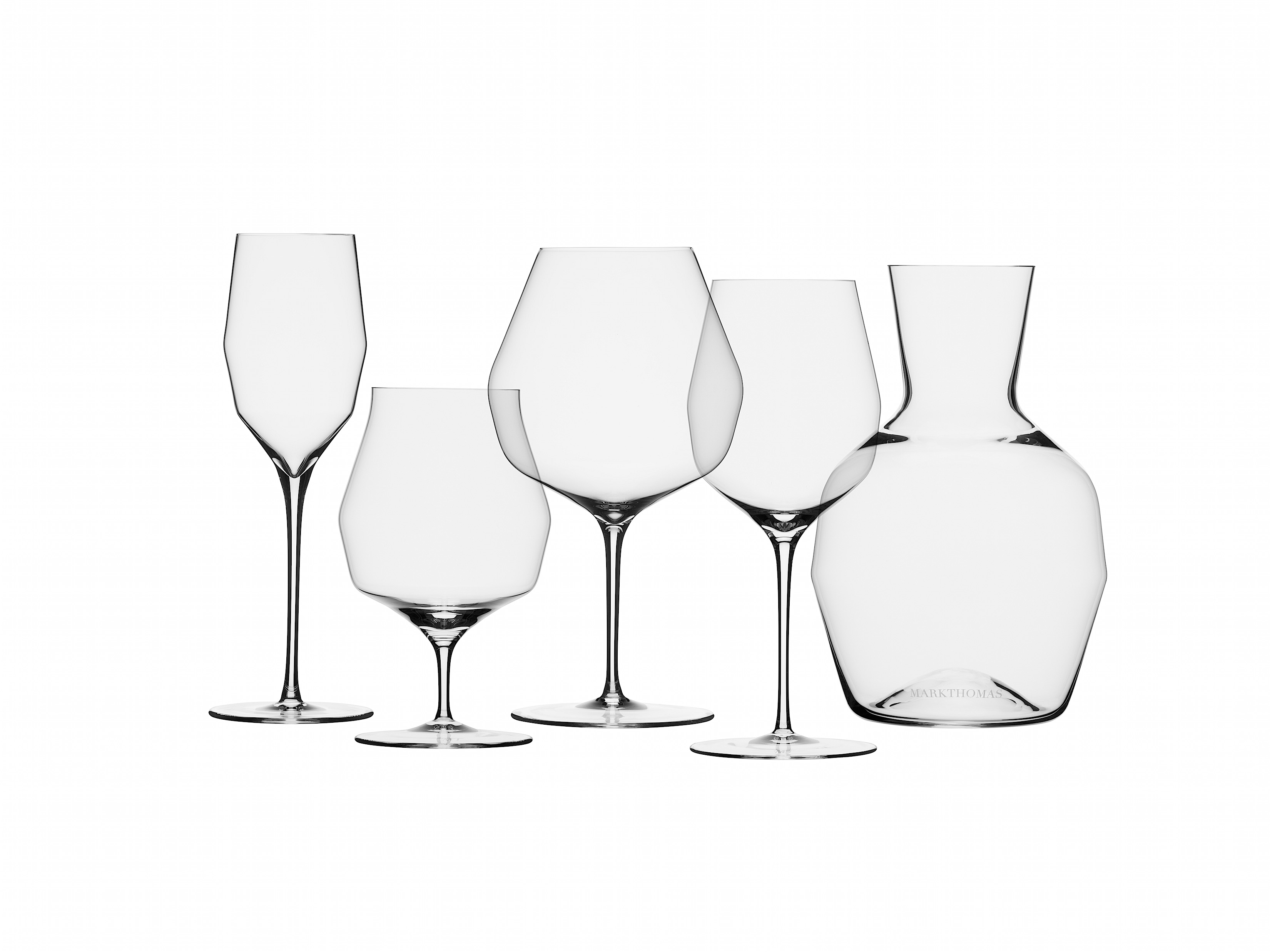 MARK
THOMAS DOUBLE BEND SERIES GLASSWARE
($65-$125)—These days the remarkable low prices
for wine and other glasses has made it irrational
not to buy good quality for everyday use. But I
cannot imagine anyone’s father not feeling giddy
if given these Mark Thomas
hand-blown, lead-free crystal glasses made in
Vienna of such beauty and lightness. Indeed, they
are so light I at first thought they were made of
very, very thin plastic. But they are also quite
sturdy, even to being put into a home dishwasher. They
are designed so that wine, Champagne, or beer
appeals to the nose, eye, touch, and feel, while
maximizing aroma and taste. The
unique double-bend design outlines the measurement
for a perfect pour: the first bend indicates the
ideal amount for a wine tasting, the second bend
ideal for the average pour size for restaurants
and wine connoisseurs. I loved the wine glasses but,
even more, I found the beer glass so convincing,
so elegant and such a perfect fit to my hand that
I doubt I shall ever drink a brew from anything
else in the future.
The glasses are not inexpensive—they rank
with some of the top-of-the-line Riedel—but the
Mark Thomas series offers more in terms of design
and utility.
Available through https://www.kneenandco.com/catalogsearch
MARK
THOMAS DOUBLE BEND SERIES GLASSWARE
($65-$125)—These days the remarkable low prices
for wine and other glasses has made it irrational
not to buy good quality for everyday use. But I
cannot imagine anyone’s father not feeling giddy
if given these Mark Thomas
hand-blown, lead-free crystal glasses made in
Vienna of such beauty and lightness. Indeed, they
are so light I at first thought they were made of
very, very thin plastic. But they are also quite
sturdy, even to being put into a home dishwasher. They
are designed so that wine, Champagne, or beer
appeals to the nose, eye, touch, and feel, while
maximizing aroma and taste. The
unique double-bend design outlines the measurement
for a perfect pour: the first bend indicates the
ideal amount for a wine tasting, the second bend
ideal for the average pour size for restaurants
and wine connoisseurs. I loved the wine glasses but,
even more, I found the beer glass so convincing,
so elegant and such a perfect fit to my hand that
I doubt I shall ever drink a brew from anything
else in the future.
The glasses are not inexpensive—they rank
with some of the top-of-the-line Riedel—but the
Mark Thomas series offers more in terms of design
and utility.
Available through https://www.kneenandco.com/catalogsearch

MAGELLAN JETS’ 10 HOUR GETAWAY CARD—Anyone
who has ever flown on a private jet is unlikely to
forget the experience and forever regret that he
can’t always fly at that level of service. Now,
just for Father’s Day, Magellan Jets is offering
Dad (and the family if he’ll take them) access
to a private jet anywhere in the U.S. with as
little as 10 hours’ notice, with a pool of nine
different jets to choose from. The
company has 24/7 concierge service to advise on
the appropriate size jet (prices vary), plan or
change itineraries, order catering and arrange
ground transportation. Purchases can be made through
Father’s Day 2015 and the card is valid for travel
through Father’s Day, 2016. Call Magellan Jets at
877-550-JETS or by visiting www.magellanjets.com

SHAVETECH USB RECHARGEABLE TRAVEL SHAVER
($29.99)—Outside of jetlag, the drained,
off-putting icky feeling getting off a plane might
be considerably helped if a man could quickly
shave without lathering up back in the bumpy
lavatory or depressing airport men’s room. If you
can get to your electric shaver, which I doubt
many men carry, it’s a noisy business and probably
needs an electric outlet to work. Shavetech
has come up with an electric shaver that is not
only easily rechargeable but looks as sleek as an
iPhone but smaller.
It’s not quite as powerful as some electric
shavers but it’s a lot less bulky, lighter, and
really pretty cool. The outer foil and
inner blades are replaceable.
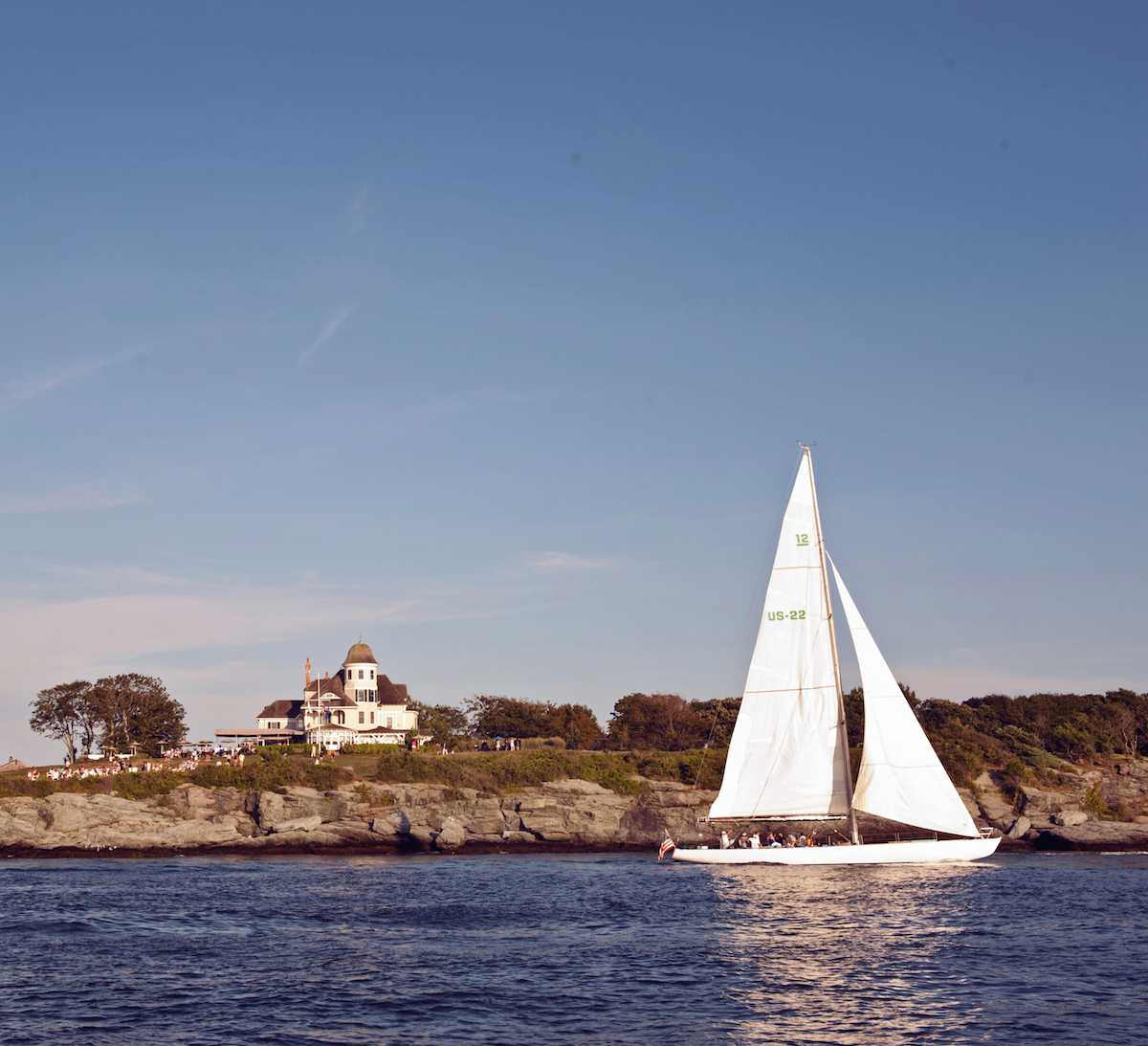
SAILING
ESCAPE FROM CASTLE HILL INN--Along with a
two-night stay at Newport, RI's historic Castle Hill
Inn, fathers, sons and daughters can enjoy a private three-hour sailing lesson
and a Castle Hill tote bag packed with gourmet chef
snacks. Guests can also gear up for the afternoon in
top-of-the-line sailing gear with a $100 gift card
from Helly Hansen. Then follow with sunset cruise
through Newport Harbor on The Madeleine,
then finish off the night with dinner at resort’s
first-class restaurant, The Mooring. Total cost
depends on room, season, weekend bookings, etc. Call
888-466-1355. http://www.castlehillinn.com
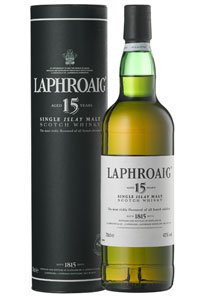
HIGH SPIRITS—There are always new spirits
coming on the market, sometimes reprises of older 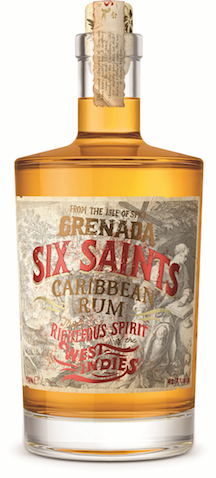 lines that Dads
cherished. Those who are fans of peaty, smoky
Scotch (though less so than the label’s 10
Year Old) should cheer at the return of Laphroaig 15
Year Old ($79.99), just re-released after 30
years for a limited time, in honor of Laphroaig's
200th Anniversary.
This Single Malt Scotch is bottled for export
at a higher 43 percent alcohol. . . Heretofore
unavailable in the U.S., Six Saints Rum ($37) takes its name from six of
Grenada’s parishes, where rum has been produced
since 1785; the distillery, one of two on the
island, is the last of the West Indies to actively
export their spirits. Made in small artisanal
batches, Six Saints has medium body, 41.7 percent
alcohol, and if you close your eyes, you may sense a
hint of the Spice Islands. . . .Haig Whiskey, which
dates to 1824, known for its Gold Label and Pinch,
is now selling Haig
Club ($50), in
a beautiful sea-blue square blue bottle, made
lines that Dads
cherished. Those who are fans of peaty, smoky
Scotch (though less so than the label’s 10
Year Old) should cheer at the return of Laphroaig 15
Year Old ($79.99), just re-released after 30
years for a limited time, in honor of Laphroaig's
200th Anniversary.
This Single Malt Scotch is bottled for export
at a higher 43 percent alcohol. . . Heretofore
unavailable in the U.S., Six Saints Rum ($37) takes its name from six of
Grenada’s parishes, where rum has been produced
since 1785; the distillery, one of two on the
island, is the last of the West Indies to actively
export their spirits. Made in small artisanal
batches, Six Saints has medium body, 41.7 percent
alcohol, and if you close your eyes, you may sense a
hint of the Spice Islands. . . .Haig Whiskey, which
dates to 1824, known for its Gold Label and Pinch,
is now selling Haig
Club ($50), in
a beautiful sea-blue square blue bottle, made 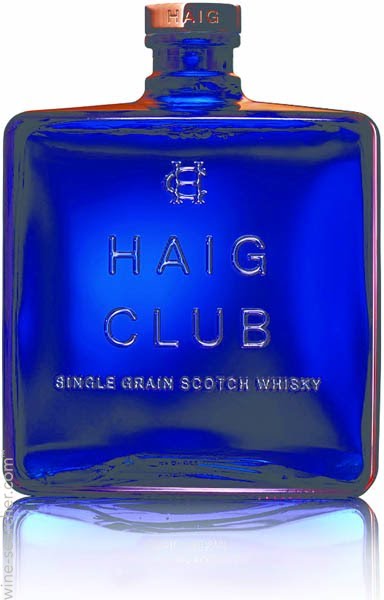 from a blend
of three grain whiskies, each matured in different
types of casks and unfiltered. Soccer star
David Beckham is the public face of this, the first
new offering from Haig in more than 30 years, and,
bottled at 40 percent alcohol, it’s designed for
easy drinking and intended to woo younger drinkers
from vodka.
from a blend
of three grain whiskies, each matured in different
types of casks and unfiltered. Soccer star
David Beckham is the public face of this, the first
new offering from Haig in more than 30 years, and,
bottled at 40 percent alcohol, it’s designed for
easy drinking and intended to woo younger drinkers
from vodka.
❖❖❖
By Mort Hochstein
Texas de Brazil
1011 3rd Avenue
212-537-0060
texasdebrazil.com
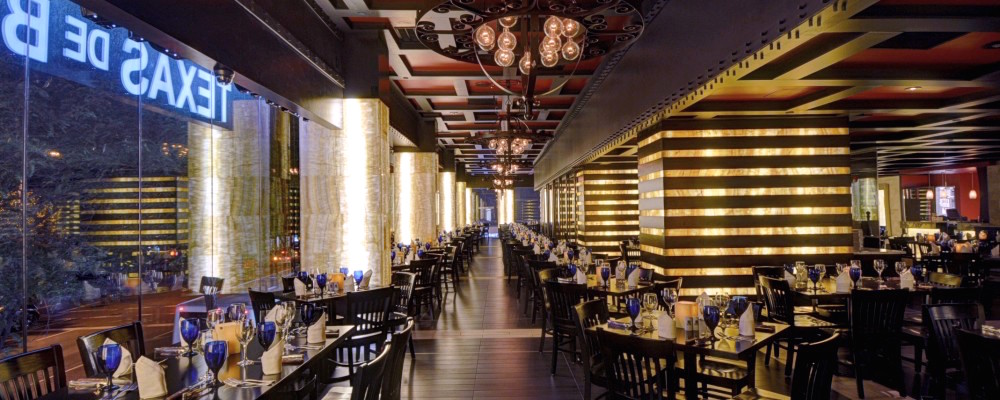 Long ago I
swore off churrasquerias, those generous South
American-style restaurants where the food,
primarily meat, keeps flowing until an ambulance
arrives to take you away. It’s not because
those restaurants are bad; it’s because
I’m weak and lose all inhibition and self control
when confronted by fine food.
Long ago I
swore off churrasquerias, those generous South
American-style restaurants where the food,
primarily meat, keeps flowing until an ambulance
arrives to take you away. It’s not because
those restaurants are bad; it’s because
I’m weak and lose all inhibition and self control
when confronted by fine food.
But recently, impelled by reports about a
really good example of the genre, I toddled over
to Texas de Brazil on the East Side of Manhattan.
The restaurant has a small, attractive bar at
street level, but all the action--meaning a
huge buffet and squads
of knife-wielding servers carrying
meat around on skewers--is upstairs. It's one
of scores of branches in an international chain
that stretches to the United Arab Emirates and
South Korea.
Texas de Brazil is a
churrascaria, the Portuguese way of spelling the
term. And, while its servers wear very moderately
flaired gaucho pants, their costumes and the
restaurant decorations are more subdued than at
other such steakhouses I’ve experienced. 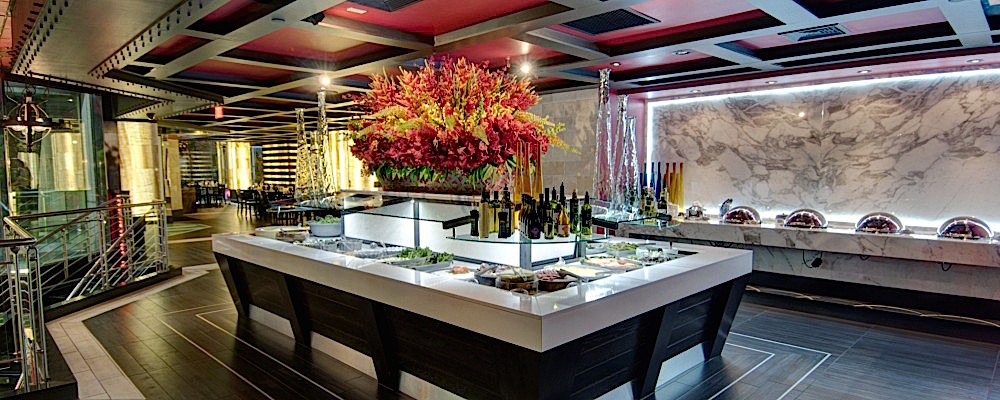
The centerpiece of the room is where I
immediately lost control, dazzled and snared by
a huge overflowing buffet table with hot
and cold food and soups (right). There were enough
goodies packed onto that table to appease all
appetites and, indeed, the buffet is offered as a
separate, lower priced option. There was sushi,
good quality smoked salmon, seared tuna,
charcuterie, about six varieties of cheese,
asparagus stalks, shrimp salads, hearts of
palm, maybe four dozen possibilities, and on
one side, along the wall, hot soup, including a
lobster bisque, creamy and
generously lobster-loaded, a meal in itself.
In a
churrascaria guests control the service
by flipping up a green card that says bring
it on or by turning the card to its red side,
which tells servers you need a time out. Show that
green card and almost immediately a waiter is at
your side, skewer up, with an
ominous, glistening blade poised to
slice away at a huge slab of meat. The first
course in our case was a somewhat spicy Brazilian
sausage, and we had to tell the waiter to ease up.
Please, we begged, please split
one small sample of whatever you have between
the two of us.
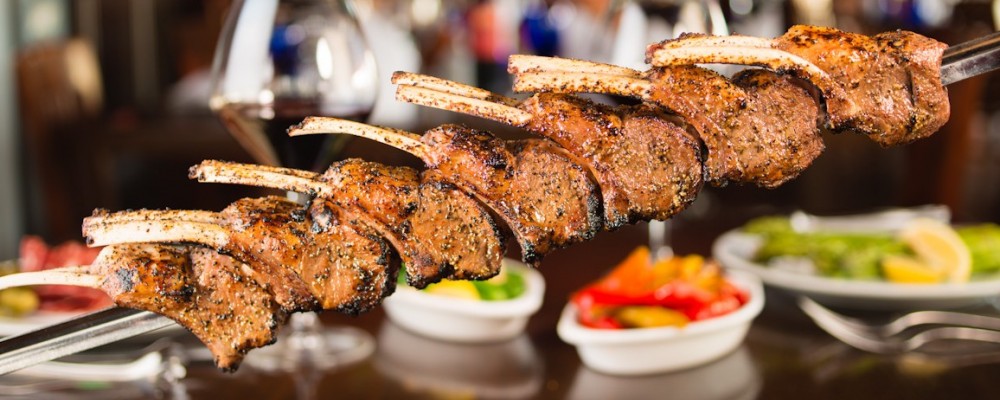 We
knew the best was yet to come and we would be wise
to leave room for pork ribs, slow roasted leg
of lamb, chicken breast wrapped in bacon, flank
steak, braised beef ribs--the surprise hit of
the evening, tender and tasty, a
flavorful ringer for the brisket we served at
Passover--lamb chops, and two takes on filet
mignon, normal cut and a filet wrapped in bacon.
In every case, we had to frustrate waiters
who were too eager to slice king-sized
portions.
We
knew the best was yet to come and we would be wise
to leave room for pork ribs, slow roasted leg
of lamb, chicken breast wrapped in bacon, flank
steak, braised beef ribs--the surprise hit of
the evening, tender and tasty, a
flavorful ringer for the brisket we served at
Passover--lamb chops, and two takes on filet
mignon, normal cut and a filet wrapped in bacon.
In every case, we had to frustrate waiters
who were too eager to slice king-sized
portions.
When the
server was not satisfying carnivorous
cravings, he was scurrying from table to table to
offer garlic mashed potatoes, creamed spinach
and an irresistible cheese bread.
I have to
mention that the waiters knew their stuff. A
lot of the terms they used to describe cuts
are Latin American in origin, and the servers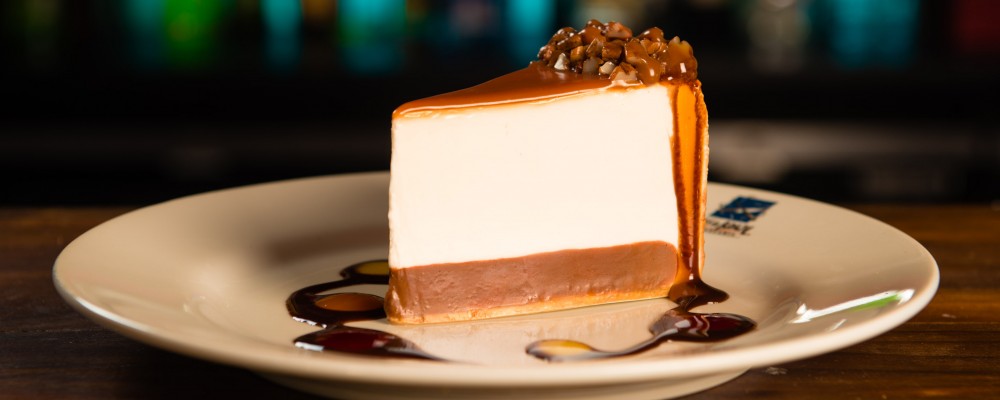 to a man,
or woman, provided an
understandable translation.
to a man,
or woman, provided an
understandable translation.
And, oh yes, dessert. The selection
was somewhat more limited. From a tray that
included several types of cakes and ice
cream, we chose a version of bananas foster
and a tangy Key lime pie, foregoing, sadly, a
generous slice of cheese cake (right).
Though the desserts were ample, king-sized to be
truthful, they didn’t measure up to the meat
offerings. And they came too late
and fell on an exhausted
palate. However, I shall return with a more
tactful battle plan, after I work on my self
control.
Open
nightly for dinner. Fixed price $59.99, for salad
area only $39.99.
❖❖❖
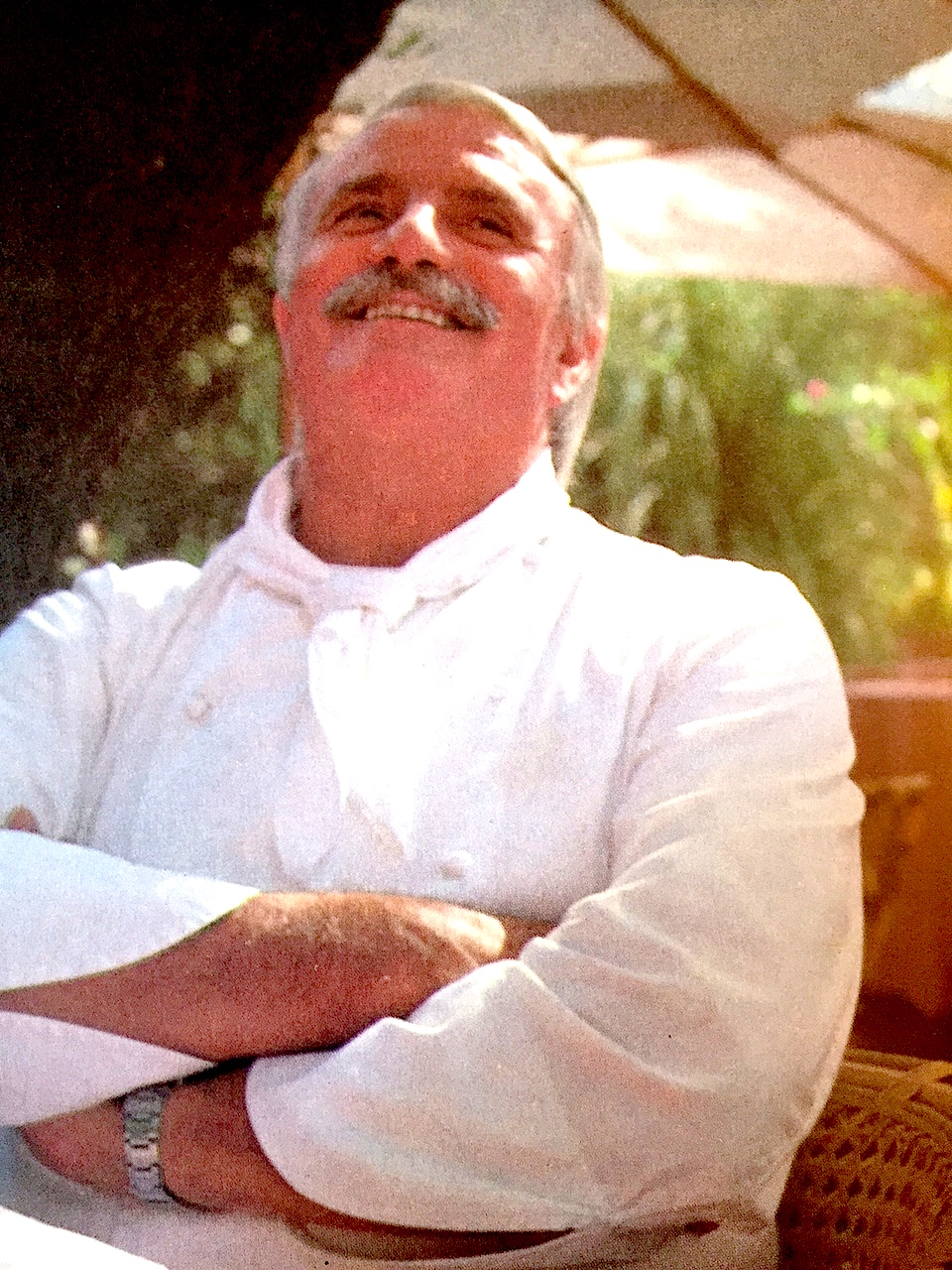
By John Mariani
Roger
Vergé, one of France’s most respected and beloved
master chefs and a pioneer of la nouvelle
cuisine, has died at his home in Mougins at
the age of 85 from complications of diabetes.
With his jaunty mustache and
white hair, Vergé was the epitome of the modern
French chef when he came on the scene in the
1960s, at a time when chefs were barely
acknowledged for their efforts and the Michelin
Guide gave stars to the restaurant, never
the chef.
Along with Paul Bocuse, Michel
Guèrard, Jean and Pierre Troisgros, and Alain
Chapel, Vergé forged a new style of French cooking
whose hallmarks were a respect for the best
ingredients, a simplification of cooking and
presentation, and a call for creativity in the
kitchen without ever abandoning the classic body
of knowledge and technique that made innovation
possible. That
the cooking was often lighter than traditional
haute cuisine was an aspect that garnered too much
attention, as if it were supposed to be health
food.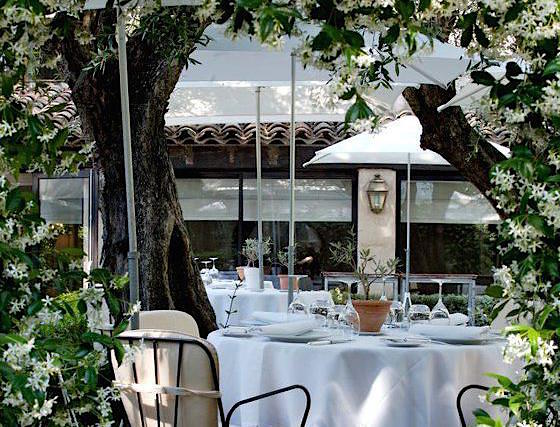
Vergé disdained the way la nouvelle
cuisine was appropriated by young,
publicity-seeking cooks who took creativity to
mean gimmicky license of a kind Vergé
characterized as “a joke. It is
nothing serious. Now it looks Japanese: large
dishes, small portions, no taste, but very
expensive.”
What
distinguished Vergé’s cooking at his restaurant,
Moulins de Mougins, which he opened with his wife,
Denise, in 1969, was a distillation of all he knew
of classic French cuisine with the flavors of
Provence and the Mediterranean.
Having cooked in North Africa
and Kenya, he developed an avid appreciation for
the taste of fruits, citrus and sweetness, which
he amalgamated into haute cuisine with rigorous
French techniques.
Vinegars and olive oil were used liberally,
the aromatics of flowers gave a freshness to the
dishes, and the presentation, on Villeroy Boch
china, was fanciful.
He’d use ingredients long
banned from haute cuisine kitchens, like pig’s
trotter, even pasta, and called it the Cuisine of
the Sun (the title of his cookbook ), served up in
an enchantingly sunny dining room with patio. The
first menus, which included lobster, were fixed
price at 28 francs; guests felt as well treated
wearing casual holiday clothes as jackets and
ties. In 1972 he won the prestigious Meilleur
Ouvrier de France award and two years later earned
a third Michelin star.
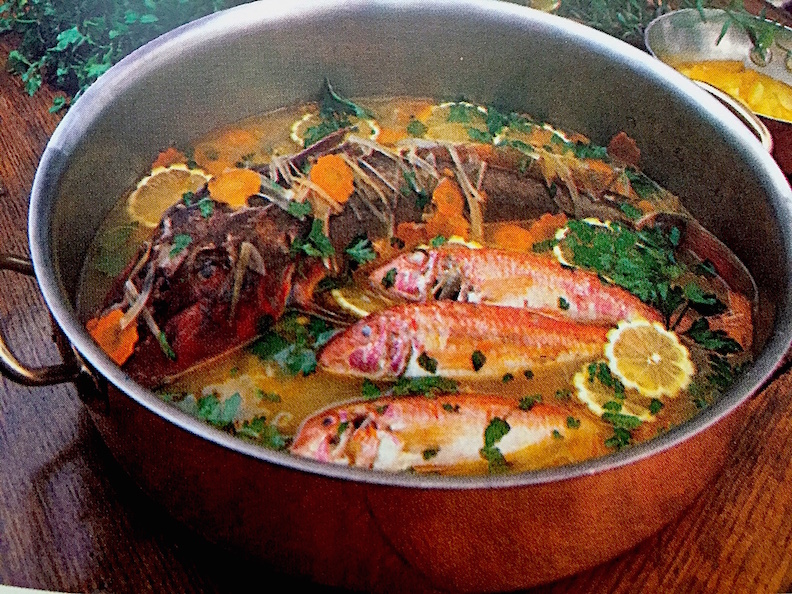 Vergé said he
“liked to take risks” and a had a “dread of
sameness,” which translated to a glamorous
lifestyle that often took him away from Mougins,
even to opening a restaurant at Disneyworld in
Orlando, FL, with Bocuse and Gaston Lenôtre, as
well as promoting products. It was
all a far cry from the stultified stereotype of
the chef who never leaves his kitchen and has no
life beyond it, including no knowledge of other
cuisines but his own.
Vergé said he
“liked to take risks” and a had a “dread of
sameness,” which translated to a glamorous
lifestyle that often took him away from Mougins,
even to opening a restaurant at Disneyworld in
Orlando, FL, with Bocuse and Gaston Lenôtre, as
well as promoting products. It was
all a far cry from the stultified stereotype of
the chef who never leaves his kitchen and has no
life beyond it, including no knowledge of other
cuisines but his own.
I still
have my index card notes from my one and only meal
I had at Moulins de Mougins, on May 6, 1982,
remarking on the lovely atmosphere of what had
once been a mill and on the young staff that
seemed such a contrast to those in stiff, formal
dining rooms to the north. The
wine list was superb, with as many wines of
Provence as of Bordeaux and Burgundy. And my
wife and I still recall just how amazed we were by
dishes that would fit impeccably onto menus today:
a warm mousse of salmon and scallops with lemon
sauce; zucchini flowers with truffles and another
rendering with a forcemeat of mullet; a lobster
salad with grapefruit, mayonnaise and snow peas;
turbot in cream with morels; duck confit with
pears; apple soufflé with Calvados ice cream; and
more. It
was all unforgettable, as much for its fine taste
as for its personality, which was purely Vergé’s.
Unlike
many of his contemporaries and a generation of
chefs to follow--who, like Alain Ducasse and Joël
Robuchon, built empires on their names and
connections--and except for the profitable foray
into Orlando and a failed restaurant consultancy
in NYC, Verge never expanded beyond Provence,
where he was happy.
Which was what Vergé wanted his guests to
be after dining so beautifully at his restaurant. Life is
too short to spend it in a dark dining room
conversing in whispers, and Roger Vergé broke that
mold with personal élan and a touch of welcome
Gallic whimsy.
❖❖❖
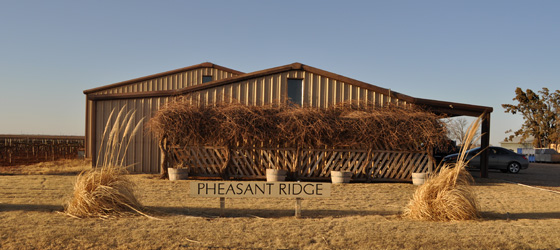
Bobby Cox Takes
Sole Ownership of
Pheasant Ridge
by Andrew Chalk
 a tipping point at which high
quality is going to become commonplace. He says
that he looks forward to being part of that
quality revolution and will be using 100% Texas
grapes.
a tipping point at which high
quality is going to become commonplace. He says
that he looks forward to being part of that
quality revolution and will be using 100% Texas
grapes.
The Bingham Family, one of the
largest growers of grapes in the High Plains,
plans to move forward with their Bingham Family
Vineyards in
Meadow, TX, and has already released wines and
opened a tasting room in Grapevine (below).
Tastings and tours start at the Meadow winery
facility later this summer after construction work
is finished but Betty Bingham stressed that they
expect the Grapevine tasting room to be the main
consumer tasting facility.
For
Texas wine lovers, this development means that two
producers committed to making quality wine from
100% Texas grapes can operate at full pace. Pheasant
Ridge holds a unique place in Texas wine history.
Founded by Cox in the early 1980s, it committed to
grow vinifera grapes in Texas right from the
start. At a time when many of the few dozen
wineries then in the state were producing an
embarrassing mish-mash of chemistry set
experiments gone wrong, Cox’s winemaking and
viticulture produced medals, not just in-state but
at the country’s most prestigious wine
competitions. The  Pheasant Ridge 1982
Cabernet Sauvignon won a medal and their Sauvignon
Blanc won an honorable mention at the San
Francisco Wine Competition. A silver medal was
awarded to the 1984 Sauvignon Blanc at the San
Francisco Wine Competition in 1985. In 1986 the
1983 Cabernet Sauvignon won a gold at the San
Francisco Wine Competition. The world’s most
influential wine critic, Robert Parker, wrote “For
Cabernet Sauvignon Pheasant Ridge Winery is
turning out lush, intense wines with plenty of
character that can compete in quality with
anybody’s.”
Pheasant Ridge 1982
Cabernet Sauvignon won a medal and their Sauvignon
Blanc won an honorable mention at the San
Francisco Wine Competition. A silver medal was
awarded to the 1984 Sauvignon Blanc at the San
Francisco Wine Competition in 1985. In 1986 the
1983 Cabernet Sauvignon won a gold at the San
Francisco Wine Competition. The world’s most
influential wine critic, Robert Parker, wrote “For
Cabernet Sauvignon Pheasant Ridge Winery is
turning out lush, intense wines with plenty of
character that can compete in quality with
anybody’s.”
The
early 1990s saw a recession which put the original
winery out of business. Cox became a prolific
consultant in the Texas High Plains, having a
formative impact on the viticultural and
enological development of the area. Today’s news
restores the status quo ante. “I aim to make the
best wine possible with the available terroir,” says Cox.
❖❖❖
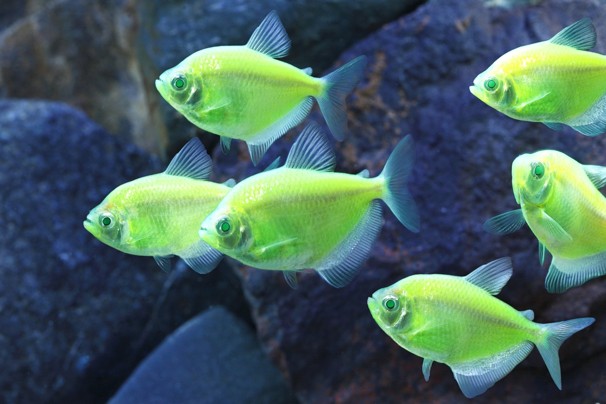 THE FISH CAN ALSO BE
USED
THE FISH CAN ALSO BE
USED AS A NIGHTLIGHT
According City Town,
despite
city warning signs that read, "Warning: Fish
contaminated. Do not eat," a growing
number of people in East Harlem, NY, are fishing for
striped bass, bluefish, and perch in the heavily
polluted East River in an effort to go "organic" and
avoid farmed fish. "Personally I like organic stuff,
so I prefer fresh fish," one man explained. "I don't
eat farmed fish." Another said the bass are "the
freshest fish in New York City,"
BLOCK THAT SIMILE!
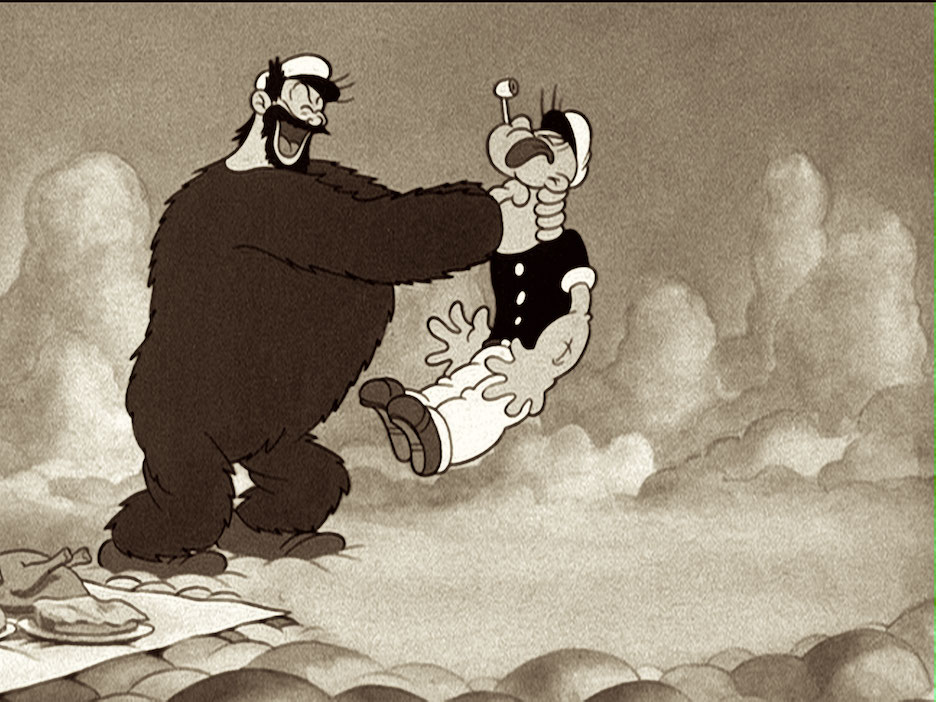
"Like a school bully, Western Europe had grabbed me by the ankles,
turned me upside down and shaken me until my loose change chimed
on the pavement."--Gavin Haines, "I Love Porto," National Geographic
Traveller UK (June 2015).
❖❖❖
Any of John Mariani's books below may be ordered from amazon.com.
 I'm proud and happy to announce that my
new book, The Hound
in Heaven (21st Century Lion Books), has just
been published through Amazon and Kindle.
I'm proud and happy to announce that my
new book, The Hound
in Heaven (21st Century Lion Books), has just
been published through Amazon and Kindle. It is a novella, and for anyone who loves dogs, Christmas, romance, inspiration, even the supernatural, I hope you'll find this to be a treasured favorite. The story concerns how, after a New England teacher, his wife and their two daughters adopt a stray puppy found in their barn in northern Maine, their lives seem full of promise. But when tragedy strikes, their wonderful dog Lazarus and the spirit of Christmas are the only things that may bring back his master back from the edge of despair.
WATCH THE VIDEO!
“What a huge surprise turn this story took! I was completely stunned! I truly enjoyed this book and its message.” – Actress Ali MacGraw
“He had me at Page One. The amount of heart, human insight, soul searching, and deft literary strength that John Mariani pours into this airtight novella is vertigo-inducing. Perhaps ‘wow’ would be the best comment.” – James Dalessandro, author of Bohemian Heart and 1906.
“John Mariani’s Hound in Heaven starts with a well-painted portrayal of an American family, along with the requisite dog. A surprise event flips the action of the novel and captures us for a voyage leading to a hopeful and heart-warming message. A page turning, one sitting read, it’s the perfect antidote for the winter and promotion of holiday celebration.” – Ann Pearlman, author of The Christmas Cookie Club and A Gift for my Sister.
“John Mariani’s concise, achingly beautiful novella pulls a literary rabbit out of a hat – a mash-up of the cosmic and the intimate, the tragic and the heart-warming – a Christmas tale for all ages, and all faiths. Read it to your children, read it to yourself… but read it. Early and often. Highly recommended.” – Jay Bonansinga, New York Times bestselling author of Pinkerton’s War, The Sinking of The Eastland, and The Walking Dead: The Road To Woodbury.
“Amazing things happen when you open your heart to an animal. The Hound in Heaven delivers a powerful story of healing that is forged in the spiritual relationship between a man and his best friend. The book brings a message of hope that can enrich our images of family, love, and loss.” – Dr. Barbara Royal, author of The Royal Treatment.
 |
The Encyclopedia of American Food and Drink by John F. Mariani (Bloomsbury USA, $35) Modesty forbids me to praise my own new book, but let me proudly say that it is an extensive revision of the 4th edition that appeared more than a decade ago, before locavores, molecular cuisine, modernist cuisine, the Food Network and so much more, now included. Word origins have been completely updated, as have per capita consumption and production stats. Most important, for the first time since publication in the 1980s, the book includes more than 100 biographies of Americans who have changed the way we cook, eat and drink -- from Fannie Farmer and Julia Child to Robert Mondavi and Thomas Keller. "This book is amazing! It has entries for everything from `abalone' to `zwieback,' plus more than 500 recipes for classic American dishes and drinks."--Devra First, The Boston Globe. "Much needed in any kitchen library."--Bon Appetit. |
"Eating Italian will never be the same after reading John Mariani's entertaining and savory gastronomical history of the cuisine of Italy and how it won over appetites worldwide. . . . This book is such a tasteful narrative that it will literally make you hungry for Italian food and arouse your appetite for gastronomical history."--Don Oldenburg, USA Today. "Italian
restaurants--some good, some glitzy--far
outnumber their French rivals. Many of
these establishments are zestfully described
in How Italian Food Conquered the World, an
entertaining and fact-filled chronicle by
food-and-wine correspondent John F.
Mariani."--Aram Bakshian Jr., Wall Street
Journal.
"Equal parts
history, sociology, gastronomy, and just
plain fun, How Italian Food Conquered the
World tells the captivating and delicious
story of the (let's face it) everybody's
favorite cuisine with clarity, verve and
more than one surprise."--Colman Andrews,
editorial director of The Daily
Meal.com. "A fantastic and fascinating
read, covering everything from the influence
of Venice's spice trade to the impact of
Italian immigrants in America and the
evolution of alta cucina. This book will
serve as a terrific resource to anyone
interested in the real story of Italian
food."--Mary Ann Esposito, host of PBS-TV's
Ciao
Italia. "John Mariani has written the
definitive history of how Italians won their
way into our hearts, minds, and
stomachs. It's a story of pleasure over
pomp and taste over technique."--Danny Meyer,
owner of NYC restaurants Union Square
Cafe, The Modern, and Maialino.
|
 |
 |
 |
 |
 |
 |
 |
 |
 Everett Potter's Travel Report:
Everett Potter's Travel Report: 
 Eating Las
Vegas is the new on-line site for
Virtual Gourmet contributor John A. Curtas.,
who since 1995 has been commenting on the
Las Vegas food scene and reviewing
restaurants for Nevada Public Radio.
He is also the restaurant critic for KLAS
TV, Channel 8 in Las Vegas, and his past
reviews can be accessed at KNPR.org.
Click on the logo below to go directly to
his site.
Eating Las
Vegas is the new on-line site for
Virtual Gourmet contributor John A. Curtas.,
who since 1995 has been commenting on the
Las Vegas food scene and reviewing
restaurants for Nevada Public Radio.
He is also the restaurant critic for KLAS
TV, Channel 8 in Las Vegas, and his past
reviews can be accessed at KNPR.org.
Click on the logo below to go directly to
his site.

Tennis Resorts Online: A Critical Guide to the World's Best Tennis Resorts and Tennis Camps, published by ROGER COX, who has spent more than two decades writing about tennis travel, including a 17-year stretch for Tennis magazine. He has also written for Arthur Frommer's Budget Travel, New York Magazine, Travel & Leisure, Esquire, Money, USTA Magazine, Men's Journal, and The Robb Report. He has authored two books-The World's Best Tennis Vacations (Stephen Greene Press/Viking Penguin, 1990) and The Best Places to Stay in the Rockies (Houghton Mifflin, 1992 & 1994), and the Melbourne (Australia) chapter to the Wall Street Journal Business Guide to Cities of the Pacific Rim (Fodor's Travel Guides, 1991).


MARIANI'S VIRTUAL GOURMET
NEWSLETTER is published weekly. Editor/Publisher: John
Mariani.
Editor: Walter Bagley. Contributing Writers: Christopher Mariani,
Robert Mariani, Misha
Mariani,
John A. Curtas, Edward Brivio, Mort Hochstein,
Andrew Chalk, Dotty Griffith and Brian Freedman. Contributing
Photographers: Galina Dargery, Bobby
Pirillo. Technical Advisor: Gerry McLoughlin.
To un-subscribe from this newsletter,click here.
© copyright John Mariani 2015

